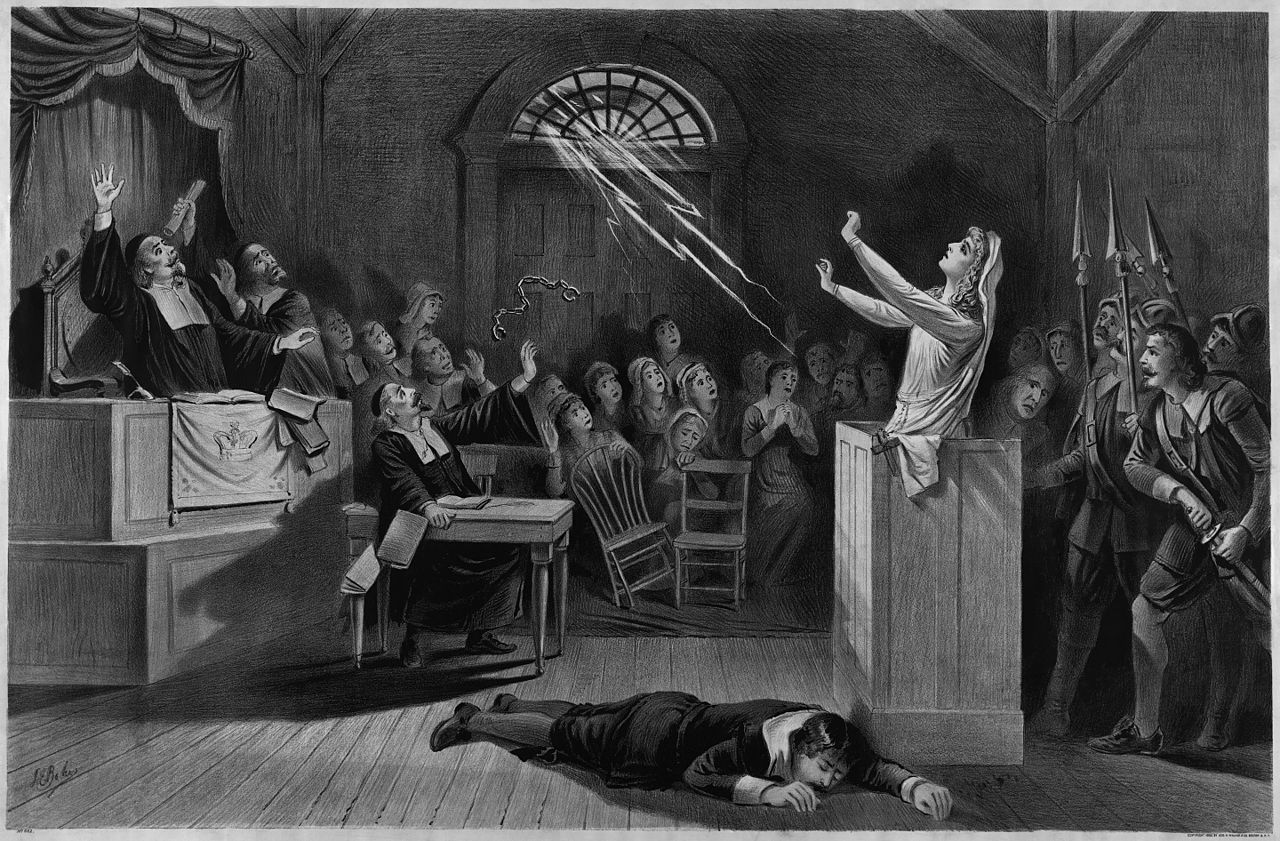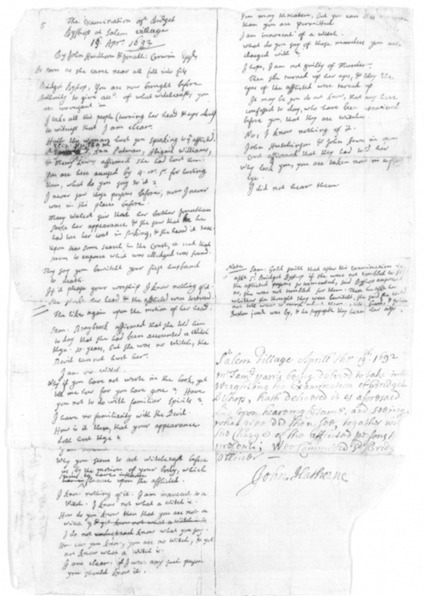Examination of Bridget Bishop, first woman executed in Salem Witch Trials
The history of the Salem Witch Trials is taught throughout school’s across the U.S., and although the insanity of the horrific events is recognized by most, many fail to reflect on the lack of justice and human rights the over 200 persecuted women, and 20 killed women recieved. This manuscript, written by Samuel Parris on April 12, 1962, holds the record of the examination of Bridget Bishop, the first woman to be executed during the Salem Witch Trials. It is easy to recognize how ludacris killing off women, many of which were outcasts, servants, and slaves, merely because accusers claimed they were possessed by the devil and practicing witchcraft was. The examiners, John Hauthorn and Jonath, start off the hearing not by examining witnesses or investigating whether she could possibly be guilty of the crime of witchcraft, but rather explaining that Bridget was “brought before authority to give acc’o what witchcrafts you are conversant in” (Hauthorn and Jonath). Just this opening of this courtroom hearing strikes a dark contrast between the justice system of today, and our following the mantra innocent until proven guilty. Instead the lives of the accused rest in the hands of the powerful little girls who cry wolf. As the examination drags on, Bishop responds to the outlandish questions with simple, clear responses, “I never saw these persons before… I am no Witch… I have no familiarity with the Devil… I am innocent… I am innocent to a Witch. I know not what a witch is” (Ray). It is this last response that most certainly put Bridget on death row, not because what she said was actually incriminating, but because those putting her on trial twisted her response and put words in her mouth. Somehow, after Bridget claims that she does not know what a witch is, the examiners draw the conclusion that she is in fact a witch, since she doesn’t know what they are, she could easily be one, unknowingly. By arguing “How then do you know that you are not a witch? How can you know, you are no Witch, and yet not know what a witch is” (Hauthorn and Jonath)? It shocking to read this first hand account of the injustices and persecution that Bridget and the other victims of the witch hunt faced when it was sewn into the fabric of the court system. According to the article “The First Salem Witch Hanging” of the History Channel website, Samuel Parris’s nine-year old daughter, Elizabeth Parris, was one of the girls who claimed to experience fits and tantrums due to being under the control of a witch. This is not only a conflict of interest, having Samuel Parris take the official record of the examination, but vastly unfair and biased towards the outcome of the hearings, influencing the Judges’ ruling and swaying opinions in the courthouse.

